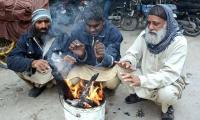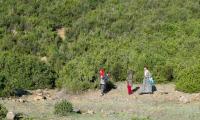by the Punjab Arms Act or for 14 years as made possible under the Sindh Arms Act 2013? How come the police and the National Action Plan (NAP) tasked to crack down on terror do not see this as a problem? Can one not interpret this to be as patronage of violence?
So, Stage 1 for the battle for de-weaponisation must begin by eliminating all illegal weapons. Needless to say, we must ask for surrender of all unlicensed weapons and follow the Australian buy-back approach to compensate those who surrender voluntarily.
In the second phase, which should include intelligence-based search operations, those found with illegal weapons must receive the maximum punishment prescribed in our ‘unused’ law books. No new laws are required and the existing laws are adequate to eliminate all illegal weapons.
Stage 2 of deweaponisation, which ought to begin in tandem, must focus on scrutinising records for establishing the validity of the ‘licenses’ issued by the government. The scrutiny ought to be carried out by independent people and not those who issued the licenses or maintain their records. The law requires a gun licence be issued only to a Nadra-verified CNIC holder, who is also a taxpayer, has no criminal record, has security clearance from the police, and is not of unsound mind. Evaluating the existing licences against this strict criterion would eliminate a very large number of spurious licences.
The fraudulence of the gun-licensing system can be judged by the fact that the Sindh government recently had to cancel 595,146 gun licences that had no claimants, while the Punjab government confirmed that half (0.9 million) of all its licences had no records and were not traceable to any individual. It is a well-known fact that gun licences have been indiscriminately used as bribes, quotas, and political appeasement.
Even Malik Ishaq of the Lashkar-e-Jhangvi had been issued 11 licences for prohibited bore weapons. Hence a rigorous evaluation of this porous and clueless licensing process should identify and eliminate almost 60-80 percent of the weapons erroneously termed as ‘licensed’ weapons.
Within the existing law, the government has the authority to stop issuing any further licences or to cancel any or all existing licences. Under any circumstances, the prohibited bore weapons must be neither possessed nor licensed. Finally, ‘peaceful’ parliamentarians, in the larger interest of the country, must be willing to part with their 69,743 prohibited bore gun licences as proof of their commitment to the cause of peace and deweaponisation.
The writer is a management systems consultant and a freelance writer on social issues. Email: naeemsadiq@gmail.com
There are over 11 million Pakistanis settled abroad, out of which around six million work in Gulf and Middle East
This year alone, US Treasury would have to roll-over $10 to $14 trillion in maturing short-term debt
Tear gas no longer marks just protest sites; it paints entire cities as battlegrounds but then again, PTI did it first
Political structures and governance systems have been central to economic and social development
It is confirmed now 40 Pakistanis had died after boat of migrants had capsized in sea near Greece
Many people believe that in future, AI will play an even more significant role in their lives







